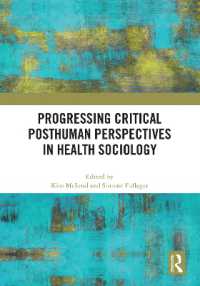Full Description
Reading comprehension is a vital part of literacy that all primary school teachers need to understand.
Drawing from educational and psychological research, this book offers a detailed analysis of how reading comprehension happens combined with practical teaching strategies for the classroom.
This heavily revised second edition explores the underlying linguistic and cognitive processes that support comprehension, from inference making to the role of metacognition. It builds on this procedural knowledge to examine text selection, classroom pedagogy and how to assess comprehension.
This is essential reading for primary English modules on initial teacher education courses, including university-based (PGCE, BA w/QTS, BEd) and school-based (SCITT, Teach First) routes into teaching, and also for current teachers wishing to further develop their knowledge.
Contents
Section I Processes
Chapter 1 What does it mean to read?
Chapter 2 What does it mean to comprehend?
Chapter 3 Linguistic processes
Chapter 4 Knowledge
Chapter 5 Cognitive processes: Memory
Chapter 6 Cognitive processes: Inference making
Chapter 7 Metacognition
Chapter 8 Pulling it all together
Section II Practices
Chapter 9 Assessing reading comprehension - but NOT for learning
Chapter 10 Assessing reading for comprehension
Chapter 11 Selecting texts for teaching
Chapter 12 Teaching for comprehension: Text choice and planning
Chapter 13 Pedagogy and assessment opportunities
Chapter 14 Teaching for comprehension: pedagogy in practice







